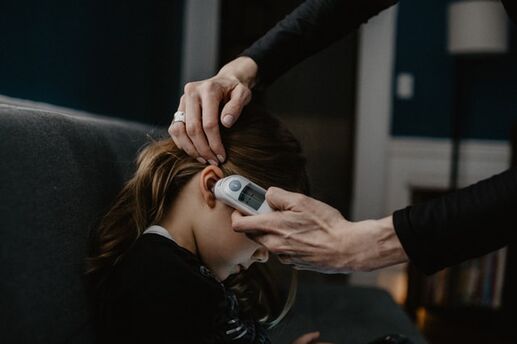Stay Healthy With a Sick Kid
When your child sneezes, you:
A. Run to his aid
B. Run to the pharmacy
C. Run for cover
If you wanted to answer A or B, but the truth is closer to C, your instincts are rational: Children bring home as many as 12 colds a year, says Dr. Lauren Feder, author of Natural Baby and Childcare: Practical Medical Advice and Holistic Wisdom for Raising Healthy Children. And one of the fastest ways for them to pass it on to you is through a sneeze, which can send contagious secretions flying at more than 100 miles per hour.
Staying well when your child is sick can be tricky, especially because children can hold on to colds for 10 days."That's sometimes twice as long as an adult," says Dr. Kevin Polsley, a primary care physician at Loyola University Health System. To complicate matters, your child might not show symptoms of a cold until a day or two after contracting the virus."That means you can catch a cold from your child before you even know he has it," says Polsley.
So it's important to fend off colds all season long -- even when you don't think they're in your house. Here's how:
1. Teach cold etiquette.
Show your child how to "catch" a cough or sneeze in her elbow or tissue, and you'll be less likely to catch the germs that lead to a cold, says Feder. Also remind your child to keep her hands away from her face and to dispose of used tissues in the trash.
To further prevent the spread of colds in your home, tell your kids to avoid sharing cups and utensils. (And resist the temptation to take a sip from your child's drink too.)
2. Hum away.
The easiest way for the cold virus to enter your body is through your nose. Humming vibrates your nasal passages and sets the small hairs in your nose, called cilia, into motion."As long as your cilia move, they move any virus out of your nose," says Dr. Murray Grossan, an ear, nose and throat specialist and author of Free Yourself From Sinus and Allergy Problems Permanently.
In fact, one small study conducted by researchers in Texas found that chronic nasal inflammation lessened after one hour of humming at bedtime coupled with humming 60 to 120 times throughout the day. Although that amount may drive you and your family crazy, it can't hurt to try humming a little ditty more often -- especially when your child's wiped out with a bug.
3. Moisturize.
When the temperature falls, so does the humidity in the air, providing the perfect conditions for the cold virus to thrive, says Feder. As nasal passages become dry and even crack, they give easier access to viruses."Our skin is a barrier, and a breach in the skin opens the door to infection," she says.
Using a sinus rinse such as a saline solution three times a week should keep your nasal passages hydrated and help you fend off infection, recommends Feder. Also consider using a humidifier to add moisture to the air.
4. Cover your hands.
Alcohol-based hand sanitizers can be helpful, but only if you use them the right way."If you put just a little on your palms, you could be missing the virus on the backs of your hands or in between your fingers," says Dr. John Maguire, owner of Simplicity Urgent Care in Arlington, Va. Squeeze a dime-sized dollop of sanitizer into the palms of your hands. Rub your hands thoroughly, cleaning the front and back of your hands, as well as between your fingers and beneath your fingernails.
Look for sanitizers that contain at least 60 percent alcohol, adds Dr. Joshua Riff, the chief medical director for Target. He suggests placing a bottle by your front door so everyone remembers to sanitize before they go into the house. And when your kid's sick, stash a bottle outside his or her room to keep germs from spreading around the house.
5. Don't forget the water.
Nothing beats a sink with soap for washing away the cold virus before it gets too cozy, says Polsley."If there's visible dirt on your digits, sanitizer won't do the trick." You'll need to lather up and keep your hands under running water for up to 20 seconds (hum the "Happy Birthday" song and you'll get your cilia moving too!).
Make hand-washing part of your family's daily routine: Scrub up when you come home and before every meal. And don't forget to decontaminate your hands every time you wipe your child's runny nose.
6. Treat toys.
If you've got little ones with the sniffles, take care when touching the toys they play with -- you know, the ones they sneeze on. Studies have shown that the cold virus can linger on surfaces for 48 hours or more.
Polsley recommends sterilizing those toys with disinfectant wipes, but first check that the brand you use kills viruses, or it's listed as virucidal against the rhinovirus. Also be sure to wipe down doorknobs, sink and toilet levers, cabinet handles, light switches and remote controls -- anything that is touched frequently by everyone in the house.
Photo by Kelly Sikkema on Unsplash
Do you let your child stay home from school when he or she has a cold? Tell us in the comments below!
Like this article? Get more by following us on Facebook at Beauty & Confidence.






